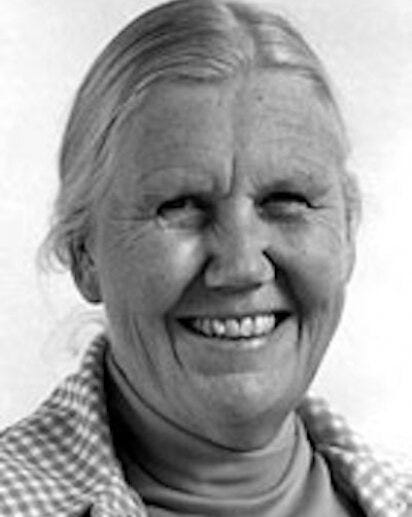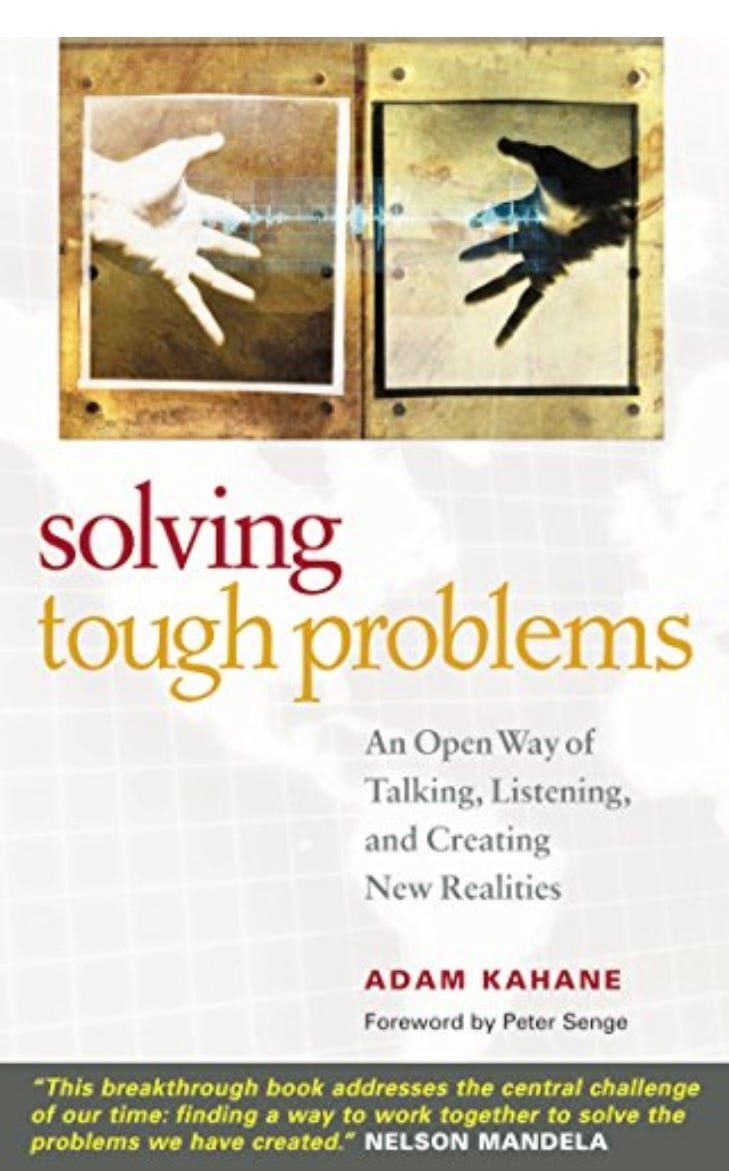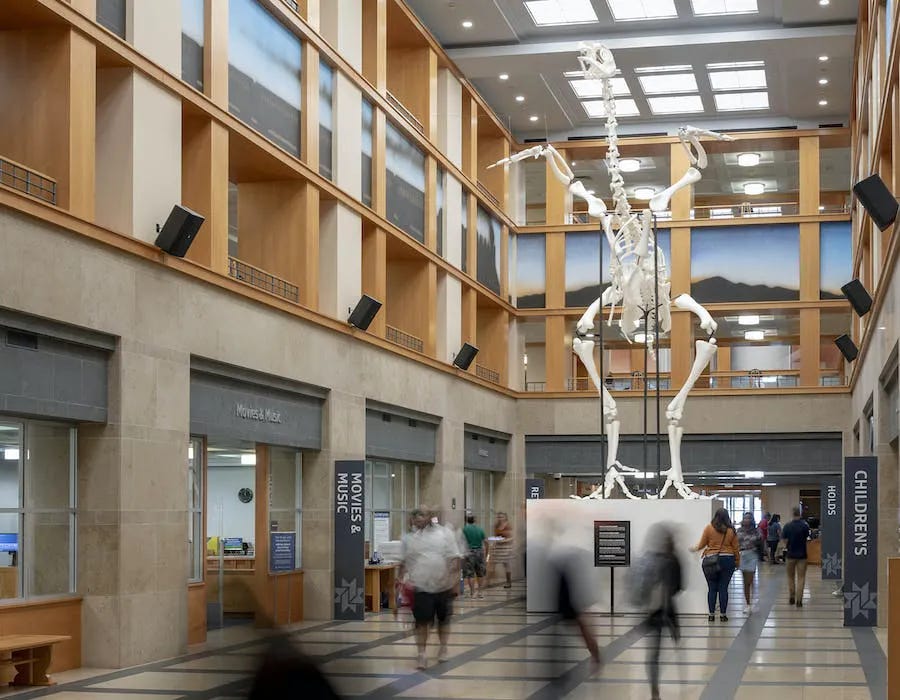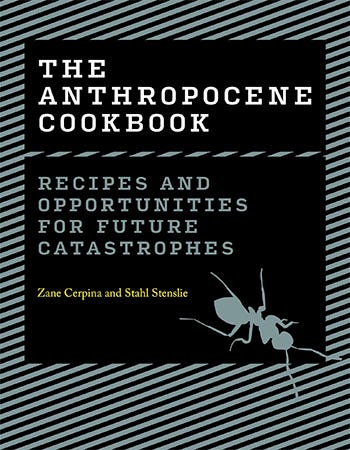1 March 2023. Peacebuilding | Food
Futures work and making peace.// (Super)foods of the future.
Welcome to Just Two Things, which I try to publish three days a week. Some links may also appear on my blog from time to time. Links to the main articles are in cross-heads as well as the story. A reminder that if you don’t see Just Two Things in your inbox, it might have been routed to your spam filter. Comments are open.
1: Futures work and making peace
It is World Futures Day today, and I have written a short piece for SOIF’s blog on futures and peacebuilding. It’s quite a long history, and quite a distinguished one, but still mostly neglected in the conventional history of futures work. (This has started to change over the past couple of decades, as critical futures approaches started to take over the futures mainstream). I’ve expanded on that post here.
The military history of futures, which started with the end-of-war Department of Defense funding for RAND and SRI, is still better known, however. So I’m going to add a little more material to the content in the SOIF blog.
(Elise Boulding. Photograph: Dartmouth College)
The long tradition of peace work in the futures community, includes work by Elise Boulding and Warren Ziegler, Robert Jungk, and Johann Galtung. Boulding and Ziegler’s work was about visioning—to imagine a future non-violent world. Elise Boulding described the origin of these workshops like this:
(I)n the late 1970s... I began to realize that we peace activists, working to bring about a nonviolent world without war, really had no idea how a world in which armies had disappeared would function. How could we work to bring about something we could not even see in our imaginations?
She asked participants to look 30 years into the future, to a world at peace, or, more exactly, ‘a world without weapons’. Then she asked them how things worked in that world, and from that future to look back at how it had come about. I think she and Ziegler developed this method for these workshops, although it’s now a widely used visioning technique.
Boulding wrote an essay that describes this process the day after doing a ‘world without weapons’ workshop with prisoners in Massachusetts. Beforehand she was pessimistic about the likely outcomes. Once there she was surprised:
The point of ‘remembering history’, working back from the future to the present, is to help participants decide what action strategies they personally will commit themselves to in the present, in order to bring the desired future about. What kind of freedom of action do prisoners have? What could they possibly commit to? Each participant contributed his own thoughts on this and six action themes could be identified from their statements. By far the most frequently mentioned action theme was
(1) inner peace and personal development. This was expressed in the following phrases: Find inner peace; find out who I am; get more grounded; develop myself physically, spiritually, mentally; continue studies; read sacred literature; become more forgiving, more patient and more nonviolent; stay focused; and deal righteously.
Johann Galtung and Robert Jungk had convened the futures conference Mankind 2000 in Oslo in 1967 because they wanted to democratise futures. As Jungk wrote in the introduction to the conference,
It had grown, especially in the United States, from its first haphazard beginnings in 1944 to a large ‘think industry’... But almost all this work had so far been financed mainly directly or indirectly by the armament effort.
At the time, and afterwards, it must have seemed to Galtung and Jungk that their initiative had failed. In the aftermath of Mankind 2000 futures became, if anything, more corporate, not less.
But some of the connections that Jungk had made at the event in the academic community, and some of his existing relationships in his peace work, created the beginnings of the World Futures Studies Federation, which outside of the bright glare of day managed to nurture the seeds of ideas about critical futures that eventually blossomed at the end of the 1990s into a rich collection of more radical and more democratic approaches. Activists always find a way eventually.
Galtung went on, much later, to develop the ‘Transcend’ method on peaceful conflict resolution for the United Nations. It is a large handbook, and it includes the ‘orange’ thought experiment that I wrote about here last time. It bears brief repetition:
Imagine a table. On that table is one orange. Sitting at the table are two children. What happens to the orange?1
The ‘Transcend’ in the title is a metaphor, and it is also a method:
To transform a conflict is to transplant it to that new reality. To transform a conflict would mean to transcend the goals of the conflict parties, defining some other goals, lifting a conflict ("disembedding") out of the bed the parties have prepared for that conflict, including the discourses to ensure that the incompatibility looks insurmountable (the contradiction non-transcendable), embedding it at a more promising place... To simplify by eliminating some parties (e.g., the "extremists") would be a major mistake; they will certainly make themselves heard and felt.
Restrictions on length also meant that I was unable to mention Adam Kahane’s work in the blog post. In his work in a succession of conflict-torn countries, notably in South Africa and Latin America, he has managed to get people who have been on different sides of the violence to talk to each other.
In his first book, Solving Tough Problems he recalls a conversation in circle where the participants were being honest with each other about their experiences in the conflict. I don’t have the book to hand right now, but from memory, a Colonel in the military was describing some of the killings he had been personally responsible for.
The woman sitting next to him joins the conversation:
Yes, Colonel, once of those people was my husband.
Kahane admits that as facilitator he didn’t really know what to do after that, so he let the ensuing silence settle on the group. And then he suggested that everyone should take a break.
Th big question on peace building and reconstruction is about how to manage disputes and difference without violence? This problem is likely to get worse. The slow violence of climate change and inequality will create more potential for conflict. But the literature is a lot longer on rebuilding after conflict than on anticipatory processes that help to manage disputes and differences before they become conflicts.
The reason I was writing about peacebuilding is that it’s one of the seven challenges that have been adopted by the Next Generation Futures Practitioners’ programme, with SOIF, as part of our ambition to help build out the futures field and to use futures with groups working in particular areas of change. The peacebuilding group has been working on a manifesto, which I will share here as an Update when it is published.
And also see SOIF’s contribution to the section on Peacebuilding and Post-Conflict Reconstruction (page 90) in ‘Global Uncertainties’, edited by Kate McNeil and Tristram Riley-Smith, published last year. I wrote a bit about that here at the time, and Galtung and Boulding also pop up in that.
2: (Super)foods of the future
I made the mistake when I first clicked on an article headed ‘Superfoods of the Future’, at the The MIT Press Reader blog, of scanning it quickly and assuming it was an industry report. Because: it is a horrific list. But it’s also just the sort of list you might see on an excitable ‘never mind the ethics, just enjoy the tech’ futures blogs.
It was only when I got to the bottom, and realised that it was an extract from a new book, The Anthropocene Cookbook, that I also realised that this was a critical piece. And that was confirmed when I looked at the biographies of the authors. Zane Cerpina: a curator and writer working within experimental and digital arts. Stahl Stenslie: a curator and researcher specializing in experimental and emerging aesthetics and disruptive technologies.
So you can sit back and enjoy some short extracts from this Superfoods report, knowing that it’s an arts intervention and not a VC-backed business plan.
Cockroach Milk
A research paper from 2018 speculated that the next superfood might be something quite unexpected — cockroach milk… It produces a substance that contains protein crystals claimed to be more nutritious than any animal milk. Even if cockroach milk was more nutritious than cow’s milk, one question remains: how to milk a cockroach?
Perhaps fortunately, it turns out to be very hard. You have to kill them, and milking a couple of cockroaches could take half a day. The quantities aren’t promising. You’d have to kill a thousand cockroaches to get three and half ounces (100g) of milk. It would be easier just to drink a lot more cow’s milk.
The meal in a pill
The great staple of science fiction ever since modern medicine was invented 150 years ago. Cerpina and Stenslie find speculation about the future meal in pill form in Anna Bowman’s satirical novel The Republic of the Future(1887) and a prediction from 1894 by the French chemist Marcellin Berthelot, then one of the “most famous chemists in the world” However:
Scientists are still working on a way to fit all the nutritional and caloric needs into one standardized capsule. It is estimated that with current knowledge and technologies, we would have to consume more than 450 pills a day to gain the necessary nutritional intake.
More work required.
Supersizing food
Or more exactly, supersizing chickens. Because if we need more food (and we might not, of course), that’s probably going to be the most efficient way to do it. And that is, pretty much what we have done to the chicken over the past century:
The human role in the development of the modern broiler chicken is thoughtfully explored by artist Andreas Greiner in his 2019 work “ Monument for the 308 .” Greiner confronts the audience with a large sculpture of a broiler chicken in the size of a dinosaur. It is a 3D-printed sculpture based on a high-definition computerized tomography (CT) scan of a dead Ross 308 chicken, a common breed of broiler bird… However, the bird can no longer survive without humans.
(Andreas Greiner, Monument for the 308, 2019. Denver Public Library, Central Branch, Denver, CO. Courtesy of the artist and Black Cube. Photo by Third Dune Productions.)
Unconventional Superfoods: Spirulina
Some of our trending superfoods are based on those enjoyed by ancient cultures—quinoa was enjoyed by the Aztecs, goji berries used in ancient Chinese medicine. Algae, also used by older cultures, seems to be on this list as well:
Spirulina platensis (also known as Arthrospira) is a genus of cyanobacteria currently gaining global interest as a potential future superfood… Today, many African countries still use it as a major protein source by harvesting it from natural waters, drying it, and then eating it. Dried spirulina holds up to 70 percent proteins, which is half more than soybeans. It also contains various vitamins and minerals and is considered one of the most nutritious foods on the planet. Because of its rich composition, the United Nations World Food Conference declared it in 1974 to be the best food for the future.
It is apparently resilient to climate change, and will grow in barren areas and saline water. The artists Michael Burton and Michko Nitta explored this, and other elements of algae-based foods, in their 2010 project ‘Algaculture’, seen in this very short trailer.
But before you rush out to look for it, there are some drawbacks:
Spirulina is also a cyanobacterium, which has been found to produce toxins. The documented health issues include allergies, nausea, and vomiting. Prolonged consumption of concentrated spirulina in the form of tablets could possibly cause irreversible damage to some organs, including the kidneys and the liver.
Maybe best not to try this at home.
j2t#431
If you are enjoying Just Two Things, please do send it on to a friend or colleague.
Galtung’s own list of ways to share the orange ran to 16 solutions. This is the 16th: “Time is worth it: the kids divide the orange, and save the seeds and plant them.Some time later that tree produces oranges, which they in turn share, eat, and re-plant and in time create a profitable orange grove business together.”






